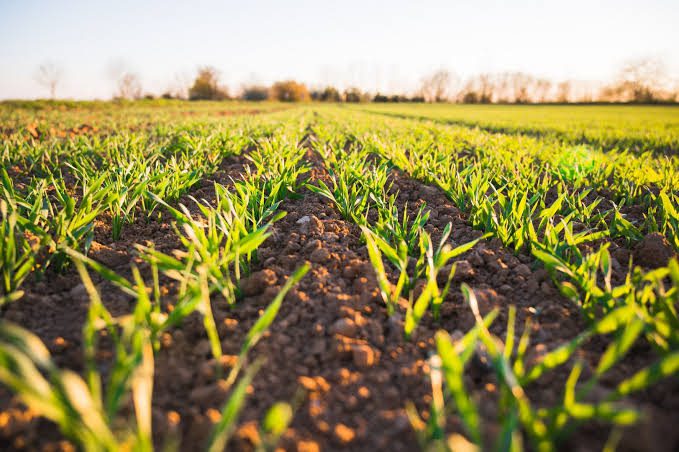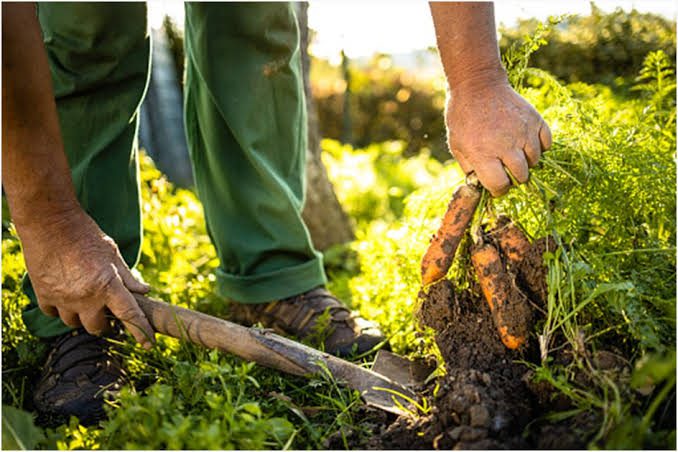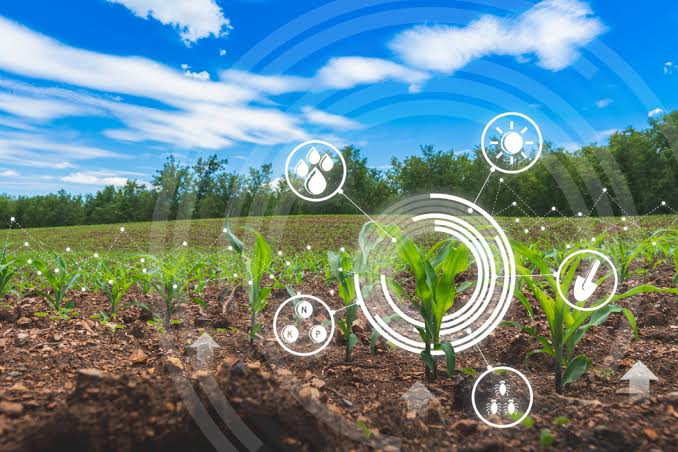Regenerative agriculture is a farming approach that is good for the Earth. It is a way of growing food that helps the land become healthier. This type of farming is like a magic spell for the soil. It makes the soil stronger, happier, and full of life.
In regenerative agriculture, farmers don’t use harmful chemicals. They are like doctors for the land. They use natural methods to take care of their fields. This means they use things like compost, cover crops, and crop rotation to keep the soil in good shape.
One of the big things in regenerative agriculture is keeping the soil covered. Imagine a warm blanket for the soil. This blanket can be made of plants that grow between the main crops. It keeps the soil cozy and safe from the harsh sun or cold winds.
Regenerative farmers also like to keep their fields full of different kinds of plants. Just like having many friends is good for us, having many plant friends is good for the soil. Different plants give different things to the soil, and this makes the soil happy.
Another important thing in regenerative agriculture is caring for the animals. Farmers let animals like cows and chickens roam around the fields. These animals help the soil by leaving their poop behind. It’s like a special treat for the soil, and it makes it healthier.
Regenerative farming is a win-win for the Earth and for us. It keeps the soil strong and full of nutrients. This means the food that comes from these farms is good for us too. It’s like a circle of love between the Earth, the farmer, and the people who eat the food.
In simple words, regenerative agriculture is like a magical recipe for growing food. It helps the Earth stay healthy and gives us good, wholesome food to eat. It’s a way of farming that makes everyone smile, including the soil.
Read Also: How to determine if the Oxygen Level of the water in your Fish Pond is enough
What is Regenerative Agriculture and How Does it Work?

Regenerative agriculture works like a superhero for the environment and our food. It’s all about making the land healthier and stronger. Here’s how it works:
1. Ditching Harmful Chemicals: In regenerative agriculture, farmers say no to harmful chemicals. They don’t use pesticides and synthetic fertilizers. These chemicals can harm the soil, water, and the creatures that live there.
2. Caring for the Soil: Soil is like a living treasure chest. Regenerative farmers know this and treat the soil like royalty. They use natural methods to keep the soil healthy. Things like compost (rotten food and plant bits), cover crops (plants that protect the soil), and crop rotation (changing the crops every year) are their secret weapons.
3. Keep it Covered: Soil likes to be covered. Just like we wear clothes to stay warm, soil needs a cover too. Regenerative farmers plant things between their main crops to keep the soil cozy. This protects the soil from the sun and wind.
4. Diversity is Key: Imagine a garden with all kinds of colorful flowers. That’s what regenerative fields look like, but with plants we can eat. Farmers grow a mix of different plants. Each plant brings special nutrients to the soil. It’s like a big, tasty salad for the Earth.
5. Animal Friends: Animals like cows, chickens, and goats are like the heroes of regenerative farming. Farmers let these animals graze in the fields. When they poop, it’s like a gift for the soil. Their waste is full of nutrients that make the soil happy.
6. No Tilling: Tilling is like digging up the soil with big machines. Regenerative farmers avoid this. Tilling can hurt the soil’s structure and make it sad. Instead, they use no-till or minimal-till methods to disturb the soil as little as possible.
7. Water Wise: Water is precious. Regenerative farmers use water wisely. They capture rainwater, build small dams, and use efficient irrigation to make sure the land gets just the right amount of water.
8. Thinking Long-Term: Regenerative agriculture is not a quick fix. It’s a love story between the farmer and the land. Farmers think about the future. They want the soil to be healthy for many generations to come.
So, regenerative agriculture is like a grand plan to help the land become stronger, healthier, and full of life. It’s a recipe for farming that’s kind to the Earth, good for the food we eat, and makes everyone – from the farmer to the soil – happy.
Read Also: The Ideal depth of an Earthen Fish Pond
Benefits of Regenerative Agriculture

Regenerative agriculture comes with a host of benefits, and here are some of the key advantages:
1. Soil Health: Regenerative agriculture improves soil health. It makes the soil richer in nutrients, helps it retain water, and makes it more resistant to erosion. Healthy soil means better crops.
2. Biodiversity: By planting a variety of crops and promoting natural ecosystems, regenerative farming boosts biodiversity. This means more plants and animals can thrive on the farm.
3. Carbon Sequestration: Regenerative farming helps to capture carbon dioxide from the atmosphere and store it in the soil. This helps combat climate change by reducing greenhouse gas emissions.
4. Clean Water: The practices of regenerative agriculture reduce the runoff of harmful chemicals into water bodies, which means cleaner and healthier water sources for both humans and wildlife.
5. Resilience: Regenerative farms are more resilient to extreme weather conditions like droughts and floods. The healthy soil can better withstand these challenges.
6. Reduced Need for Chemicals: By avoiding synthetic pesticides and fertilizers, regenerative farming reduces chemical usage, which is better for the environment and human health.
7. Economic Sustainability: Over time, regenerative agriculture can lead to cost savings for farmers as they rely less on expensive synthetic inputs.
8. Higher Quality Food: The food grown using regenerative methods often has better taste and nutrition due to the nutrient-rich soil it’s grown in.
9. Community Building: Regenerative farming encourages a sense of community. Farmers often work together and share knowledge, which can strengthen rural communities.
10. Long-Term Sustainability: Regenerative agriculture is sustainable for future generations. It helps ensure that the land remains productive and healthy for years to come.
In simple terms, regenerative agriculture benefits the Earth, the people who farm the land, and the people who eat the food. It’s a win-win for everyone and for our planet.
In Conclusion, regenerative agriculture is a way of growing food that cares for the Earth. It’s like giving our planet a big hug. This kind of farming is good because it helps the land, the plants, and the animals. see how it works.
First, it’s all about keeping the soil healthy. Farmers make sure the soil has lots of good things in it, like vitamins for plants. They use compost, which is like plant food, and let animals roam on the land to make it better.
Second, farmers are friends with the insects and the bugs. They don’t use bad chemicals that hurt these tiny creatures. Instead, they have special plants that invite good bugs to come and protect the crops from bad bugs.
Third, they don’t plant the same thing in the same place every year. They move the plants around. This helps the soil and the plants stay strong. Fourth, they use less water. They save water by being clever and using it only when they really need to. This is good because it helps save our precious water.
Fifth, they don’t like to dig up the land too much. They leave the land alone, so it can rest and get better. Lastly, they plant lots of different things together, like a big garden party. This makes it harder for bad things to happen to the plants.
So, Regenerative Agriculture is like a dance with nature. It helps the Earth stay happy and healthy. It’s a good way to grow food and take care of our planet.
Read Also: Noise Pollution: Concept, Sources, Effects, and Control Measures

